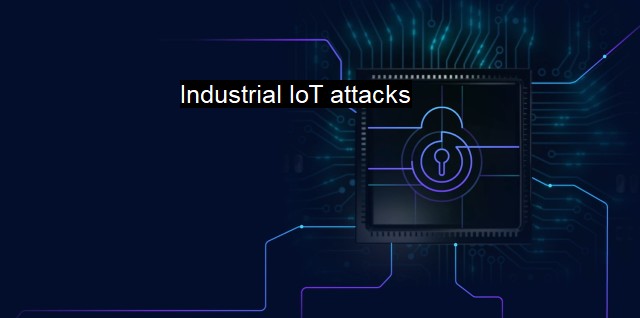What are Industrial IoT attacks?
Risks and Response Strategies for Industrial IoT Cyber Attacks: Safeguarding Critical Infrastructure and Devices
Industrial Internet of Things (IoT) refers to interconnected sensors, instruments and other devices networked together with computers in industries like energy, manufacturing, and transportation. It forms a crucial part of Industry 4.0, the current trend of automation and data exchange in manufacturing technologies. Security of Industrial IoT is of prime concern increasing digitization and connectivity have led to a rising tide of cyber threats, popularly known as Industrial IoT attacks.Industrial IoT attacks refer to the cyber threats and breaches targeted towards the IoT devices utilized in various industries. These specially crafted cyber attacks are aimed to acquire unauthorized access, manipulate critical data or derail a system's proper functioning, potentially leading to significant downtime, disruption of services, and financial losses. Since Industrial IoT forms an essential part of critical infrastructure facilities like power grids, transport systems, and water supplies, attacks can have severe societal impacts.
The inherent reasons for susceptibility to IoT attacks in the industrial context include the limited processing power and memory of many IoT devices, which prevents them from running traditional cybersecurity programs. the mounting complexity and diversity of the IoT ecosystem, combined with inadequate security measures taken during the design and deployment phase add to the vulnerability.
Among numerous types of cyber attacks targeting Industrial IoT, some notable ones include Distributed Denial of Service (DDoS) attacks, Eavesdropping, Physical attacks, and Malware. DDoS attacks can bring down entire networks by overloading them with traffic. Eavesdropping involves unauthorized interception of data transferred over the network. Physical attacks incorporate non-digital methods such as theft or damage of devices while Malware introduces malicious software to interrupt, damage, or gain control over a systems' operations.
The major concern with these kinds of attacks is that once penetrated, cybercriminals can have an entire control of the infrastructural operations, which can lead to dire consequences. For instance, a hacker could penetrate an energy plant's Industrial IoT network and take control of its power generation and distribution systems, leading to widespread power outages or even more disastrous events like explosions.
The advent of sophisticated Industrial IoT attacks has led cybersecurity companies to comprehensively implement the antivirus programs to detective malicious activities, including regular monitoring and updating of antivirus signatures. securing Industrial IoT is a more challenging task than securing regular IT networks due to the diverse and complex nature of IoT devices.
Antivirus solutions for Industrial IoT focus on maintaining high-security standards to avoid exploitation. They implement a layered approach to cyber-defense which may include firewalls, intrusion detection and prevention systems, secure boot, encrypted data communication, and access control policies. Some of the antivirus solution providers even utilize Machine Learning and Artificial Intelligence to predict and counter emerging threats.
There is a concerted effort by cybersecurity firms to work closely with enterprises to instill a security focused previously-engineering phase, leading to the development of IoT devices that are 'Secure by Design'. This approach will ensure the development of IoT devices with built-in security features that are well equipped to handle potential attacks.
Various challenges lie ahead. The increasing use of Industrial IoT and connected technologies is likely to expand the target surface area for cyber attackers. While the progression of technologies is creating new opportunities for businesses, it’s also opening doors for potential threats and breaches. To effectively parry these, cybersecurity strategies need to evolve in tandem with technological advancements, with a focus on predictive rather than reactive solutions. After all, the stakes in Industrial IoT are nothing less than the safe and smooth operation of vital infrastructure and industrial systems that undergird modern civilization. A shift in focus, from not only productivity and efficiency but also towards improved security measures, is gradually becoming a necessity for industries heavily reliant on IoT. Achieving a balance of operational efficiency and robust security will be the ultimate key to harness the truly transformative potential of Industrial IoT.

Industrial IoT attacks FAQs
What is Industrial IoT (IIoT) attack?
An Industrial IoT (IIoT) attack is a cybersecurity attack on Industrial Internet of Things (IIoT) systems or industrial control systems (ICS). Such an attack can cause immense damage to critical infrastructure, manufacturing facilities, and other industrial control environments.How common are Industrial IoT attacks?
Industrial IoT attacks are becoming more common with each passing day as the technology that controls critical infrastructure and other industrial control systems is becoming more inter-connected and automated.What are the consequences of an Industrial IoT attack?
The consequences of an Industrial IoT attack can range from stolen data and intellectual property, to physical damage of equipment, disruption of operations, and even loss of life. This can lead to financial losses, regulatory penalties, and damage to reputation.What can be done to prevent Industrial IoT attacks?
To prevent Industrial IoT attacks, it is essential to have appropriate security measures in place, such as strong authentication and access control, network segmentation, encryption, and regular vulnerability assessments. Additionally, educating employees and implementing best practices for cybersecurity hygiene can also help prevent Industrial IoT attacks.| | A | | | B | | | C | | | D | | | E | | | F | | | G | | | H | | | I | | | J | | | K | | | L | | | M | |
| | N | | | O | | | P | | | Q | | | R | | | S | | | T | | | U | | | V | | | W | | | X | | | Y | | | Z | |
| | 1 | | | 2 | | | 3 | | | 4 | | | 7 | | | 8 | | |||||||